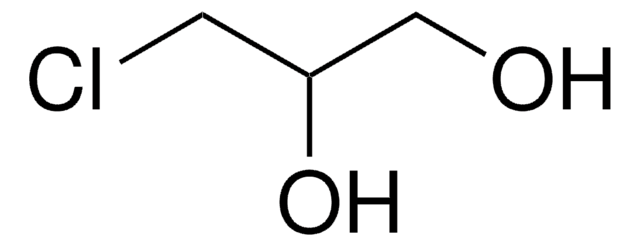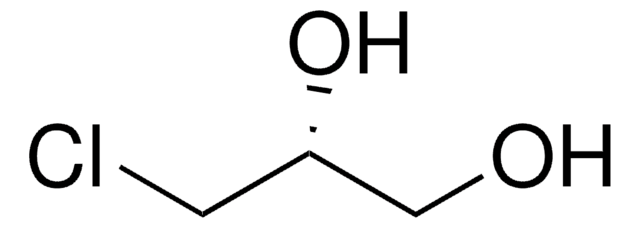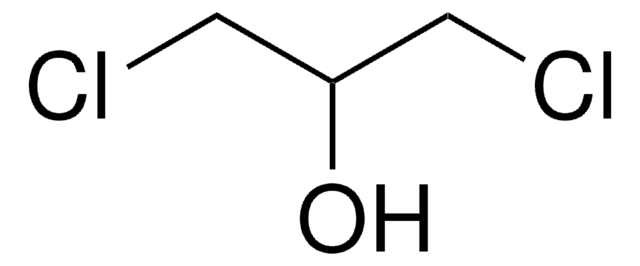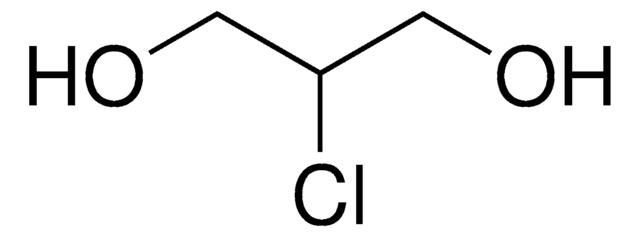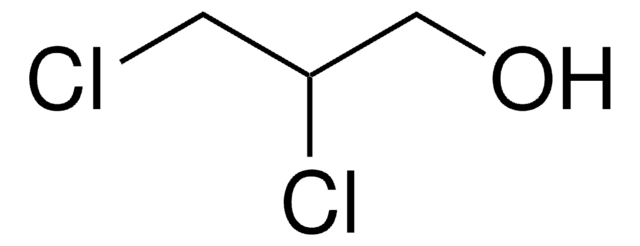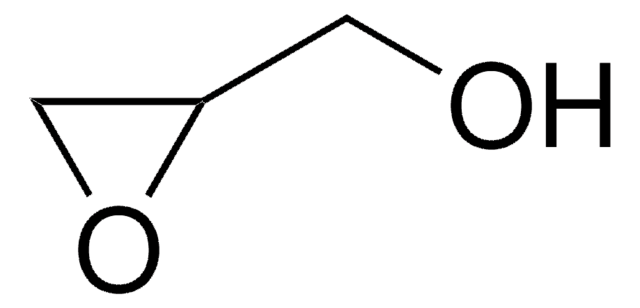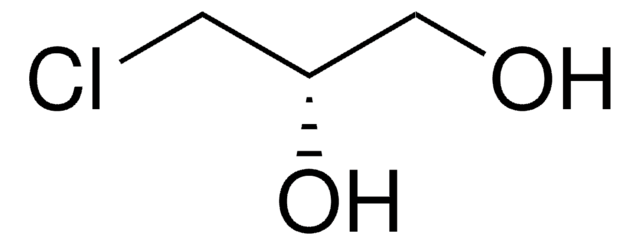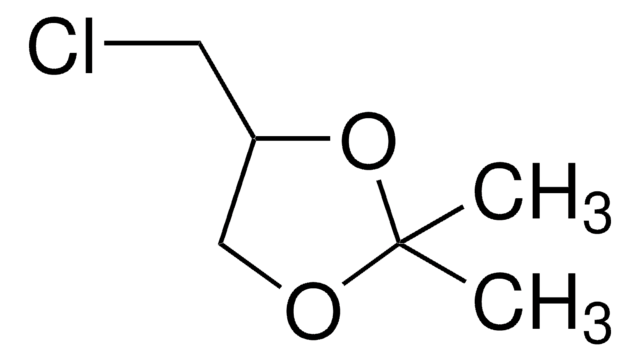107271
(±)-3-Chloro-1,2-propanediol
98%
Synonym(s):
α-Chlorohydrin, α-Glycerol chlorohydrin, α-Monochlorohydrin, 3-MCPD
About This Item
Recommended Products
vapor pressure
0.04 mmHg ( 25 °C)
Quality Level
assay
98%
refractive index
n20/D 1.480 (lit.)
bp
213 °C (lit.)
solubility
H2O: soluble
alcohol: soluble
diethyl ether: soluble
density
1.322 g/mL at 25 °C (lit.)
functional group
chloro
hydroxyl
SMILES string
OCC(O)CCl
InChI
1S/C3H7ClO2/c4-1-3(6)2-5/h3,5-6H,1-2H2
InChI key
SSZWWUDQMAHNAQ-UHFFFAOYSA-N
Looking for similar products? Visit Product Comparison Guide
General description
Application
Biochem/physiol Actions
signalword
Danger
Hazard Classifications
Acute Tox. 2 Inhalation - Acute Tox. 3 Oral - Carc. 2 - Eye Dam. 1 - Met. Corr. 1 - Repr. 1B - Skin Irrit. 2 - STOT RE 1 - STOT SE 1
target_organs
Kidney, Testes
Storage Class
6.1A - Combustible acute toxic Cat. 1 and 2 / very toxic hazardous materials
wgk_germany
WGK 3
flash_point_f
235.4 °F - closed cup
flash_point_c
113 °C - closed cup
ppe
Eyeshields, Faceshields, Gloves, type ABEK (EN14387) respirator filter
Choose from one of the most recent versions:
Already Own This Product?
Find documentation for the products that you have recently purchased in the Document Library.
Customers Also Viewed
Our team of scientists has experience in all areas of research including Life Science, Material Science, Chemical Synthesis, Chromatography, Analytical and many others.
Contact Technical Service